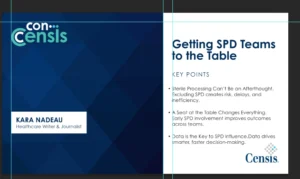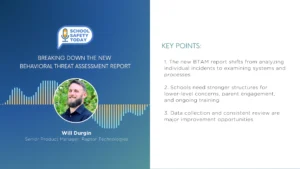What’s Next for Higher Ed This Fall?
Apogee, the only managed services provider focused solely on higher education, today released the first of a five-part series from the company’s new State of Higher Education Strategic Planning 2020 Report. This first-of-its-kind study analyzed 491 publicly available strategic plans from universities and colleges across the country to understand strategic planning in the pre-COVID-19 world. Focusing on schools with less than 5,000 students as well as larger institutions at a 70/30 percent split, the study reveals why institutions were not prepared for the rapid and dramatic shift to remote and blended learning, the main reason being the drop-off in technology planning after 2015.
The report’s first installment, titled Technology Timescale: The Relationship Between Technology Initiatives and Pedagogy Initiatives Over Time measures differences between technology and pedagogy strategic initiatives pre-2015 and post-2015. These differences are significant for institutional survival in a post-COVID world.
“In the wake of the pandemic and ensuing economic and social unrest facing our nation, higher education faces an existential threat and the profound need to be a beacon of hope and opportunity,” said Teresa de Onis, Vice President of Marketing, Apogee. “We’re excited to share insights from Apogee’s State of Higher Education Strategic Planning 2020 Report and believe it can help colleges make better data-driven planning decisions, better align goals around Student Outcomes, Student Life and Pedagogy to technology initiatives, and develop bolder strategies to emerge from the 2020 crises stronger than before.”
Key Insights from Part 1 of the State of Higher Education Strategic Planning Report:
- While Student Outcomes and Student Life initiatives were prioritized by more than 90 percent of schools, only 66 percent of higher ed strategic plans prioritized technology initiatives.
- While Pedagogy initiatives priority increased from 76% to 83% from pre-2015 to post-2015 strategic plans, technology initiatives declined over the same period, dropping from 71 percent to 64 percent, indicating that technology did not keep pace with the shifts in teaching and learning paradigms.
- There is an upward trend in prioritizing pedagogy post-2015, with large schools averaging 97 percent strategic plan emphasis and small schools at 90 percent.
- Investment in technology strategic initiatives post-2015 declined across both large and small schools at 68% for large schools and 63% for small schools.
- Between large and small schools, the former has usually prioritized technological and infrastructure growth more than the latter.
“Our study provides keen insights into higher ed’s recent responses to the COVID crisis,” said Rajiv Shenoy, CTO, Apogee. “Overnight, schools had to rush to network-driven, technology-centric remote learning modalities. Many schools have had to grapple with budget restructuring and are reeling from downsizing and massive revenue losses. Instead of downsizing, Apogee believes that rightsizing – divesting in traditions or initiatives that no longer serve the needs of a modernized education, and reinvesting those dollars in innovative ideas and technologies – will pave the way for blended learning, sustainability, and growth as campus networks emerge as an institution’s vital life force.”
Rethink Your Strategic Plan
As the role of IT rapidly evolves from cost center to key contributor in the pursuit of enrollment, retention, persistence, and outcomes, the higher ed institutions that proactively review, rethink, and execute on their strategic plans will emerge victors in a post-COVID world.
Apogee offers the following recommendations:
- Colleges and universities all over the country are finding out how good (or bad) they are at deploying synchronous and asynchronous learning. In just a few short weeks, remote learning fell from its perch of optional convenience and landed with a thud as an absolute necessity. Apogee’s white paper titled “Transform the Educational Experience through Blended Learning” addresses how blended learning can reshape the educational experience.
- As blended learning moves to the forefront, rightsize. Apogee’s white paper titled “What Will You Do to Win?” addresses how you can divest from resource-hogging operational headaches to invest in infrastructure that enables blended learning.
- Do not count on age-old infrastructure. To stay ahead, modernize with built-in refreshes and futureproofing. Demand a financial model that is predictable and sustainable.
- Outsource your network with the help of a knowledgeable and proven managed service partner (MSP). Ensure the partner provides industry’s best practices, stewardship, and continuity.
More to Come from Apogee’s State of Higher Education Strategic Planning 2020 Report
Apogee will release the research findings in a series of five reports in 2020 and 2021. An interactive microsite with data visualizations and downloadable reports will be also be launched in Fall 2020. In addition, Apogee will add more data to the study in Summer 2021 by taking a “post-COVID-19” look at the same schools studied with an additional 500 schools included in the research. To receive our latest report findings and more insights, please join our mailing list.









